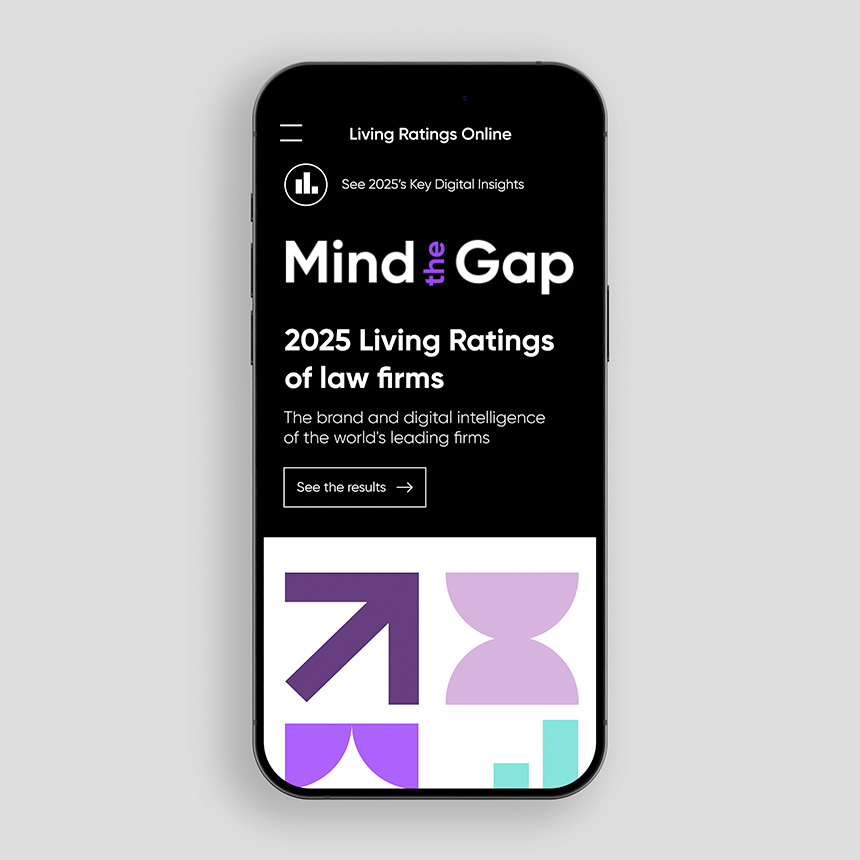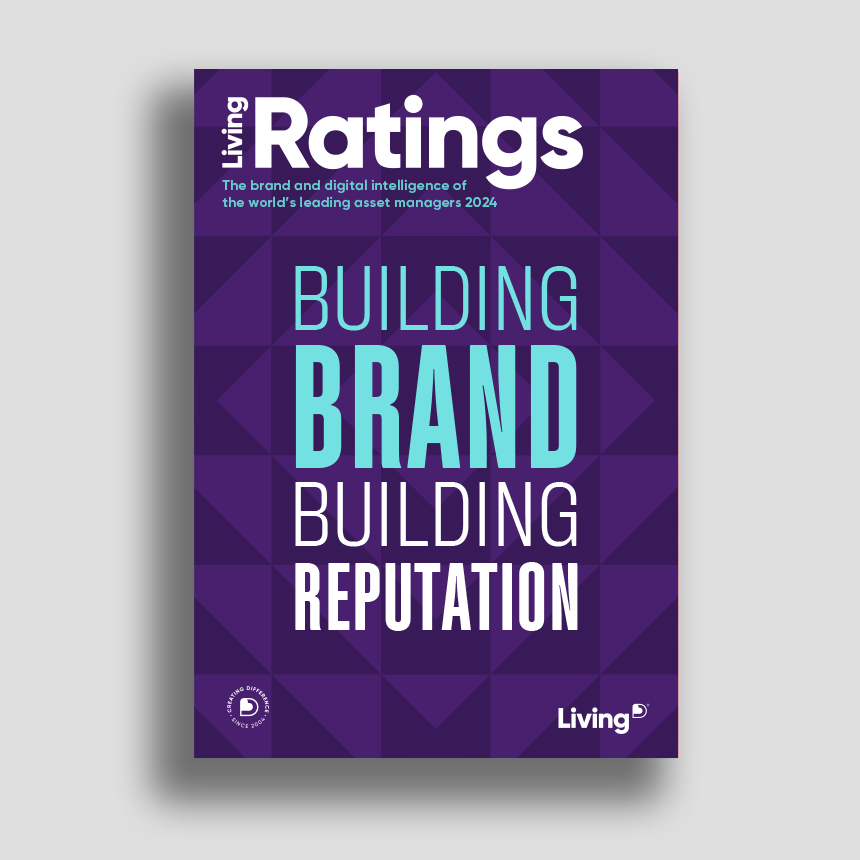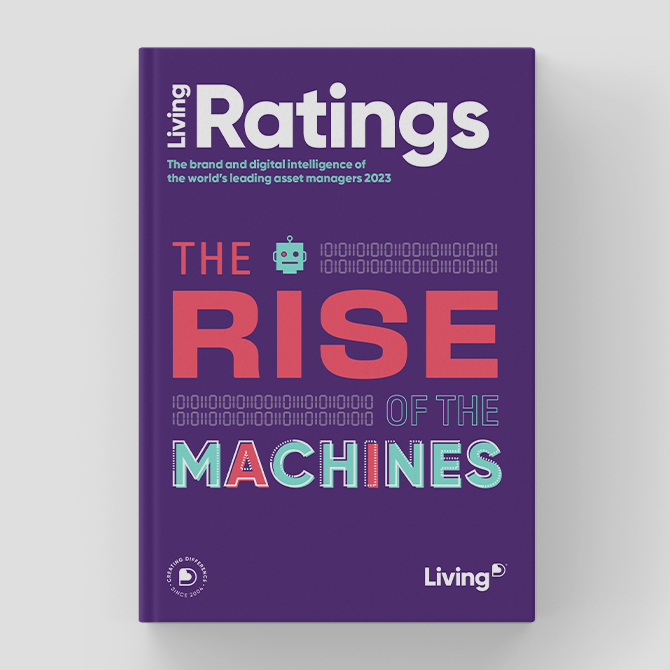Engagement
Engagement by the numbers
Determined asset managers recognise the potential of useful digital functionality backed by a client-focused channel strategy. They can then create appealing and relevant content in a variety of media including graphics, audio, animation, and video that captivates, informs and motivates the target audience.
72%
of websites provide strong information architecture.
2024: 63%
19%
of websites deliver intuitive user experiences.
2024: 23%
22%
of websites provide an accessibility tool or voice activation.
2024: N/A
13%
deliver high quality search functionality and results.
2024: 7%
63%
use marketing automation or personalization.
2024: 70%
19%
of websites have a data-driven online tool.
2024: 12%
75%
of website have consistent related content.
2024: 67%
46%
of websites provide a document library for intermediaries.
2024: 48%
89%
is the average website accessibility score across the sector.
2024: 88%
45%
of asset managers are fully optimizing LinkedIn.
2024: 43%
51%
of asset managers have an active Instagram channel.
2024: 47%
72%
have an active YouTube channel.
2024: 72%
The leaders in engagement
The leading asset managers that understand the potential of useful digital functionality backed by a client-focused channel strategy.
State Street IM
- = Engagement
Franklin Templeton
- = Engagement
Capital Group
- = Engagement
Key
| 2025 Rankings | Firm name | Engagement % score | Category |
|---|---|---|---|
|
4
|
Invesco | 80.92% |
F
|
|
5
|
Nuveen | 80.77% |
D
|
|
6
|
BlackRock | 80.31% |
D
|
|
7
|
PIMCO | 80.15% |
F
|
|
8
|
Allspring Global Investments | 76.92% |
D
|
|
9=
|
Aviva Investors | 76.15% |
D
|
|
9=
|
BNY Investments | 76.15% |
F
|
|
11
|
American Century Investments | 75.69% |
F
|
|
12
|
Fidelity International | 73.85% |
L
|
|
13=
|
AllianceBernstein | 73.69% |
D
|
|
13=
|
Schroder Investment Management | 73.69% |
F
|
|
15
|
Brookfield Asset Management | 72.46% |
F
|
|
16
|
Dimensional Fund Advisors | 72.00% |
F
|
|
17
|
Janus Henderson Investors | 71.38% |
D
|
|
18=
|
Legal & General Investment Management | 71.08% |
L
|
|
18=
|
TD Asset Management | 71.08% |
F
|
|
20
|
T. Rowe Price | 70.46% |
F
|
Keys to engagement
How an asset manager structures and organises its digital content is a direct reflection of its focus and purpose. A cluttered or fragmented site leaves users uncertain about what the firm stands for, while a carefully planned navigation that prioritises the needs of both investors and intermediaries communicates confidence and clarity.
Once a clear site structure is in place, attention should turn to the flow and design of each page — ensuring that every interaction feels purposeful. Content must be thoughtfully curated for a time-pressured audience, balancing depth with accessibility.
We recognise firms that adopt a “landing page mindset,” where each section is designed to guide users swiftly to relevant information and insight.
The best asset managers employ intelligent, fast search engines that deliver accurate, curated, and visually supported results.
These enhance engagement and reflect a client-first approach. In contrast, sites that return long, unfiltered result lists signal a lack of user consideration — an impression no brand should want to leave.
An asset manager’s website should invite participation, not just passive browsing. Interactive tools, calculators, or data-driven resources that align with a firm’s investment strategy or educational goals can turn visitors into active users.
When updated regularly, these features become “sticky” content that attracts repeat engagement and reinforces expertise.
We place high value on firms that fully leverage LinkedIn and other relevant channels to engage distinct audiences with tailored content. Social media should never follow a one-size-fits-all approach — each platform requires its own voice, cadence, and purpose.
The most effective strategies integrate seamlessly with brand storytelling, reinforcing expertise and accessibility in equal measure.
Keys to evidence
A well-structured home page acts as a clear reflection of brand purpose. The strongest asset managers use it to communicate their value proposition, highlight investment capabilities, and surface timely insights — all while guiding users naturally into deeper areas of the site.
After reviewing one hundred asset management websites, it’s clear that many still rely on similar design conventions — familiar colour palettes, typography, and imagery. There’s a significant opportunity for firms willing to take a bolder, more distinctive visual route.
Each firm’s brand should reflect its culture, investment philosophy, and people — ensuring its visual identity stands apart in a crowded marketplace.
In asset management, relationships and expertise are everything. Yet too many firms present their teams as disconnected individuals rather than collaborative experts.
The best demonstrate unity — showcasing leadership, culture, and collective purpose on their people pages, supported by firm-wide data and authentic stories that highlight how they work together to deliver results.
There’s no shortage of content in the investment industry — but too much of it says the same thing. The leaders are those who apply clear content governance and deliver thoughtful, audience-first material that aligns directly with their business goals.
In this space, less is often more — quality, consistency, and focus always outperform quantity.
Asset managers who take a measured and strategic approach to social media are rewarded with stronger engagement and clearer brand resonance. Each channel should deliver the right content to the right audience at the right time.
Visible leadership on LinkedIn, meaningful interactions, and a consistent visual identity all contribute to building authority and trust.





